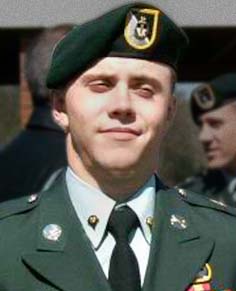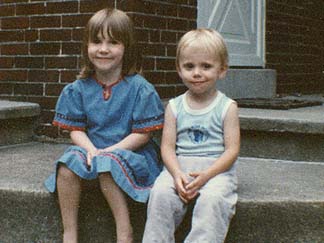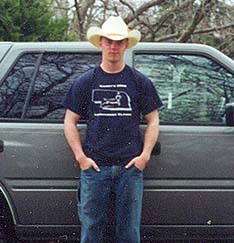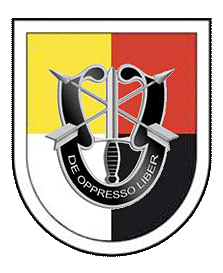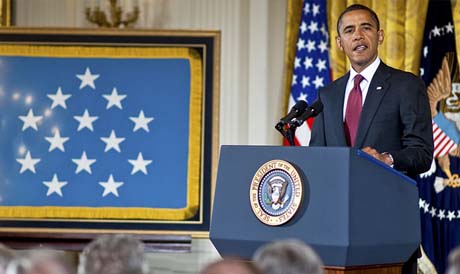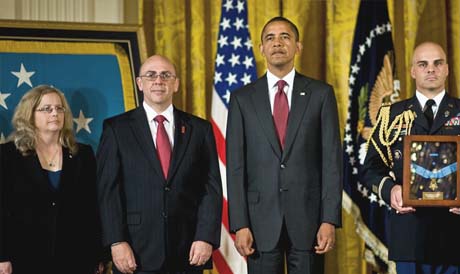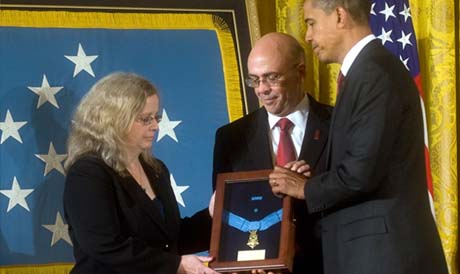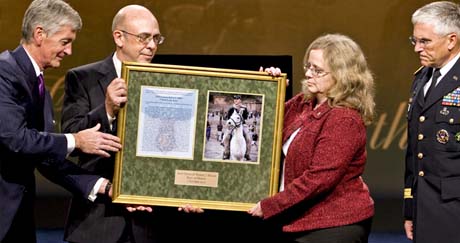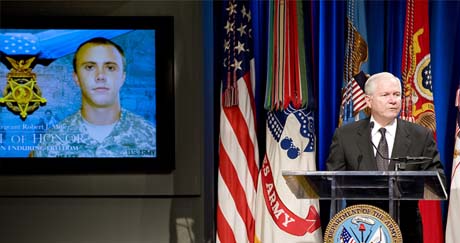Robert James Miller was born in Pennsylvania, the fall of 1983. He was the second of eight children of Phil and Maureen Miller. He was named after his two grandfathers, Robert Miller and James Morgan, both World War II veterans. Rob was proud of his family's service to our nation, going back to the Revolutionary War. Rob was a very active child, taking his first steps at only 7 months, and he never slowed down. His first friends were the children of Cambodian refugees. The stories they told about the horrors they experienced during Pol Pot's years made a deep impression on Rob, and he understood at an early age that there were some very bad people in the world.
When Rob was 5 years old, the family moved to the Chicago suburb of Wheaton, ll. He attended kindergarten at Emerson Elementary School, and then first through eighth grades at St. Michael School in Wheaton. For several years he continued the gymnastics lessons he had begun in Harrisburg, and then moved on to baseball, basketball and track, while participating in Boy Scouts and playing trumpet in band. Rob always had a lively curiosity about the world, and was particularly interested in history. While dinnertime conversations too often involved blow-by-blow accounts of the latest Simpsons episode, his parents would at times share experiences of their time spent in the Soviet Union and Berlin during the Cold War, and this seemed to deepen Rob's sense of appreciation for American freedom.
Rob would go the extra mile when something caught his attention. For an eighth grade history assignment, he was required to interview a veteran. He could have taken the easy route and ask his father a few questions about his job as a translator in Berlin. Instead, Rob contacted his parents' former chaplain who had briefly served as a medic in the German Navy in occupied France during the Second World War. He received extra credit for his efforts.
Rob's interest in gymnastics was rekindled when he began attending Wheaton North High School. He spent hours every day in the gym and was co-captain of the school's team during his junior and senior years, leading them to fifth place in the state tournament. Rob helped pay for gymnastics lessons by working at a local gym, first as a janitor late at night, and then teaching the younger students. Because of his patience with children (something he learned from watching his younger siblings), Rob was entrusted with the special task of instructing several children with autism. For three years, Rob continued with band, switching from trumpet to tuba. He developed an appreciation for classical music during this time. Rob followed his passions, which could include learning Latin and other foreign languages, but those passions did not always include doing the kind of homework that would result in good grades.
Through all this time, Rob showed an interest in the military. In high school, he planned on applying to the Naval Academy, but changed course when he realized that he would not be accepted because of his colorblindness. Eventually joining the military was still part of his plan, and this resolve was strengthened after the events of Sept. 11, 2001.
Staff Sgt. Miller graduated from the Special Forces Qualification Course Sept. 26, 2004, and the Special Forces Weapons Sergeant Course March 4, 2005. Miller received his coveted Special Forces Tab and was promoted to Sergeant after graduating from the Special Operations French Language Training Course, Sept. 30, 2005.
After high school, Rob enrolled at the University of Iowa for the 2002-2003 school year, hoping to get onto the school gymnastics team. Though unsuccessful, he still worked out with the team and helped out at meets. He related that after one meet, as he and several others were cleaning up and putting things away, a couple of students crumpled up the American flag that had been hanging up and threw it in a closet. Rob made them retrieve it, and then gave them a lesson on how to properly fold the American flag.
Rob enlisted in the Army in August 2003, shortly after his family moved to Oviedo, Fla. With the North Carolina Outer Banks only a few hours away from his base at Fort Bragg, he became an avid surfer. When Rob would visit home in Oviedo, he would promptly head off to Patrick Air Force Base or New Smyrna when wave reports were good. He maintained his spirited, carefree manner throughout his Army training and experiences. On one of his last visits home, Rob and his mother drove down to Patrick to watch the Space Shuttle come in for a landing. On the trip back to Oviedo, Rob drove his stick shift pickup truck with a drink in one hand, frequently adjusting his iPod with the other, while steering with his knees. When his mother would protest, he would just put his head back, laugh, and say, “I know what I'm doing!”
At Rob's memorial service at Fort Bragg, one of his Army friends said that when you went to Rob's condo, you never knew if you would find him cooking a gourmet meal with classical music in the background, or cleaning a weapon with hard rock blaring. Rob had a rare zest for life, he was a loyal friend, a caring brother and son, and a great patriot.
Assignments:
Staff Sgt. Miller enlisted as a Special Forces trainee Aug. 14, 2003. He graduated from Infantry Basic Training and Airborne School at Fort Benning, Ga., Jan. 6. Miller graduated from the Special Forces Qualification Course Sept. 26, 2004, and the Special Forces Weapons Sergeant Course March 4, 2005. Miller received his coveted Special Forces Tab and was promoted to Sergeant after graduating from the Special Operations French Language Training Course, Sept. 30, 2005. That same day he was assigned to Company A, 3rd Battalion, 3rd Special Force Group (Airborne), Fort Bragg, N.C. He deployed to Afghanistan to support Operation Enduring Freedom from August 2006 to March 2007. During this deployment, Miller received two Army Commendation Medals for Valor for his courage under fire. Miller returned to Afghanistan for his second tour in October 2007, where he served as a Weapons Sergeant for his team.

